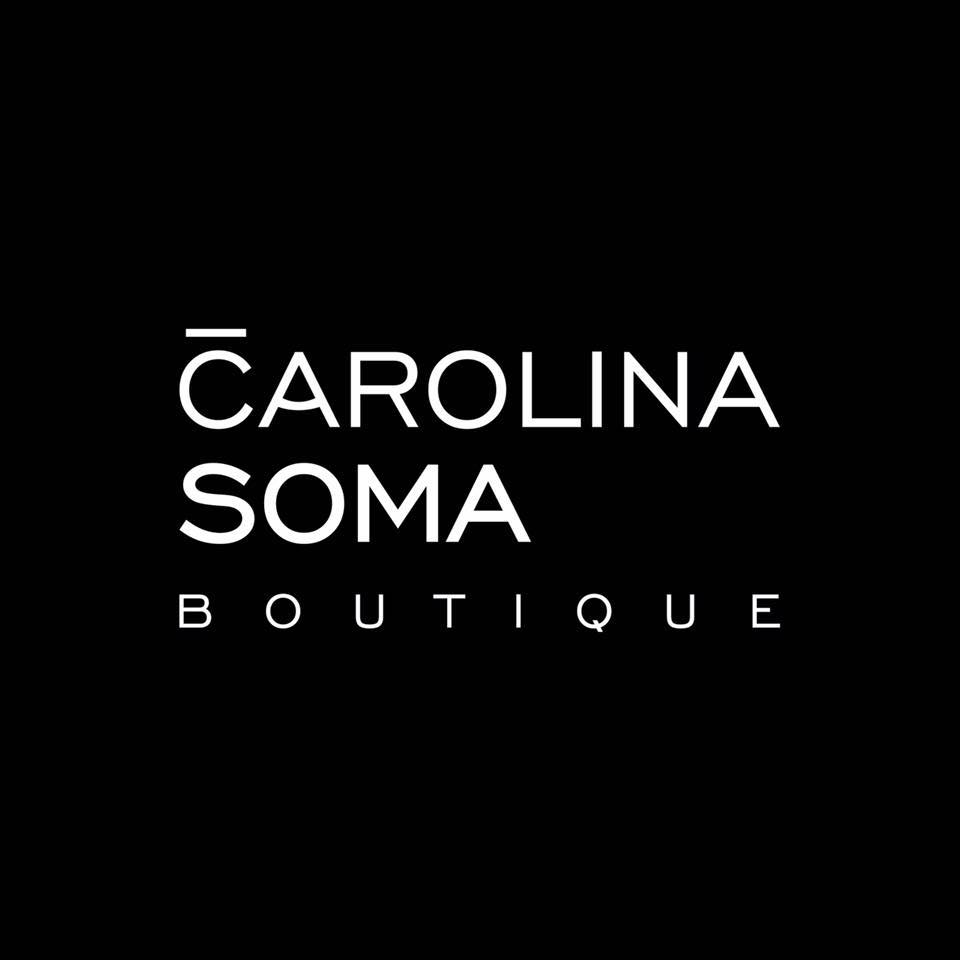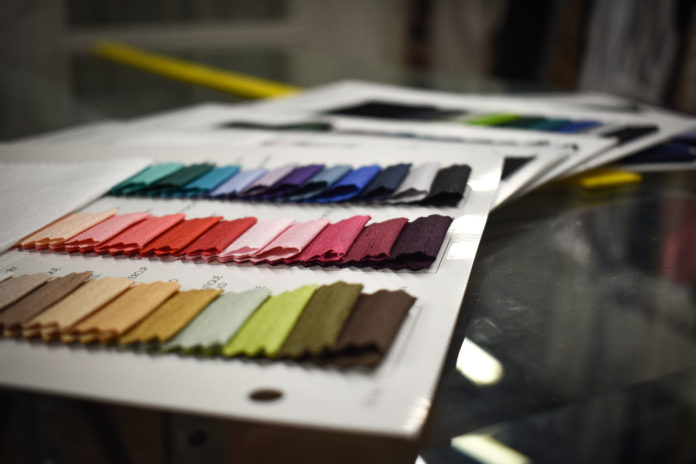Carolina Torres grew up in Rio Cuarto, a small town in Argentina. In April of 2019, she opened “Carolina Soma Boutique” (a name inspired by her mother) in the West Village of Greenville, SC. The story of her path to success as a fashion designer and entrepreneur is both insightful and inspiring.
Tell me about what it was like growing up in Argentina.
“I have my best memories from Argentina, my childhood memories are present every day. I grew up in a small town in Rio Cuarto about 9 hours from Buenos Aires, the capital city of Argentina, with my mom, dad, two sisters and one brother. I am the oldest. My family on my mother’s side had an estate where we would spend our summers, so I love the countryside lifestyle.”
How did you know that you wanted to be a designer?
“I’ve always loved fashion. I was always working with my hands and creating. Clothing was very expensive, so my mother used to sew for us. She taught me to sew and my Grandma taught me how to knit, so I started making clothes. At first for my Barbie dolls and then eventually for myself. I didn’t know how to make patterns so I would just use whatever clothes I liked that I already had and use them to get the size right. Back then in Argentina, taking a siesta was extremely important, it was a must, but I would get extremely bored and sew or knit instead. Sewing, knitting, and designing was always a hobby of mine, it’s always been something I loved to do so it isn’t work for me.”
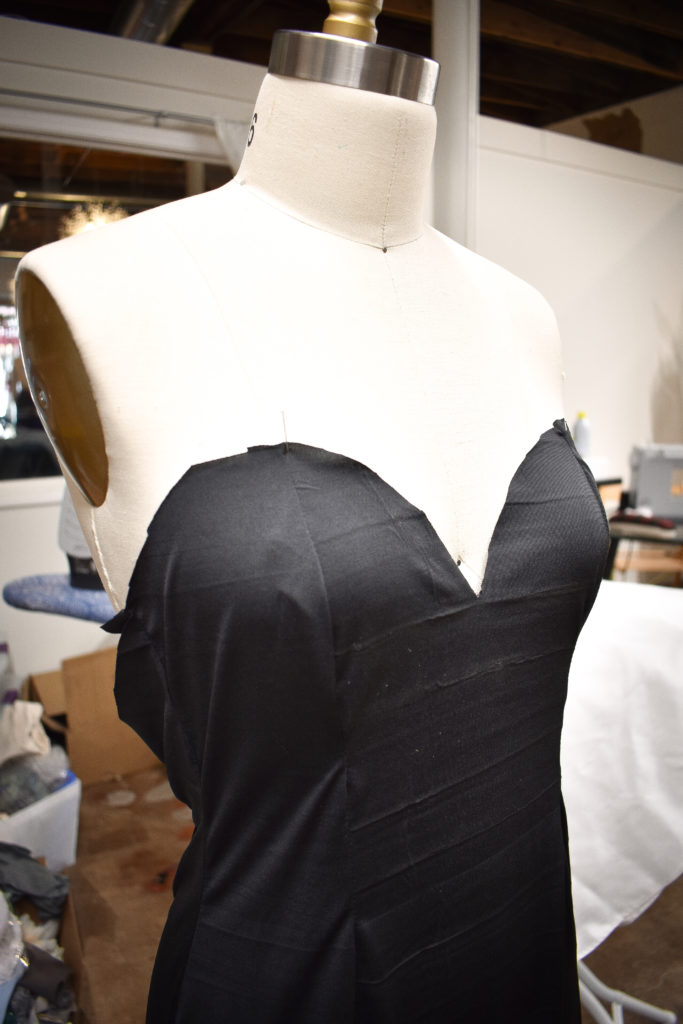
Carolina sewed, sketched and knitted through her childhood into her high school years until it became time to graduate high school. She was headed to a university in Buenos Aires to study to be an architect until her brother suffered a horrible accident. She ended up staying with her family. Once her brother recovered she was faced with the choice, yet again, of which path to take.
“My first choice was to be a fashion designer, but to make it as a fashion designer in Argentina is very hard and I felt like I needed to go for a “sure thing”. When I couldn’t go forward with Architecture school I said: “okay, let’s go for fashion”. I had the choice to study fashion in college but the options were very limited. Public Universities in Argentina offer fashion design for free or you can work directly with a designer. I chose to study fashion design at Roberto Piazza Fashion School in Cordoba. You study for two years and graduate as a ready-to-wear designer then can go for another year and a half to finish as a couture designer. I liked it because it was close to where I lived and he already had a name for himself. I felt like having his credibility behind me was better than just taking a class. 20 years ago there were very limited options for esteemed fashion schools. Now you can go to places like St. Martins in London or Parsons in New York, but back then you either studied under a designer or were self-taught. That experience gave me the foundation I needed to be successful.”
Carolina Soma Boutique isn’t the first shop Torres has owned. She opened her first boutique in Argentina during the same month she became a ready-to-wear designer under Roberto Piazza.
“In 2001, when I was 23, I started my boutique in Argentina. I had my boutique in Argentina for 4 years. My dad helped me start from the ground up. He put money in and all I had to do was pick the place. I had 3 seamstresses working for me. Until I learned, my mom helped me on the business side so that I could focus on designing.”
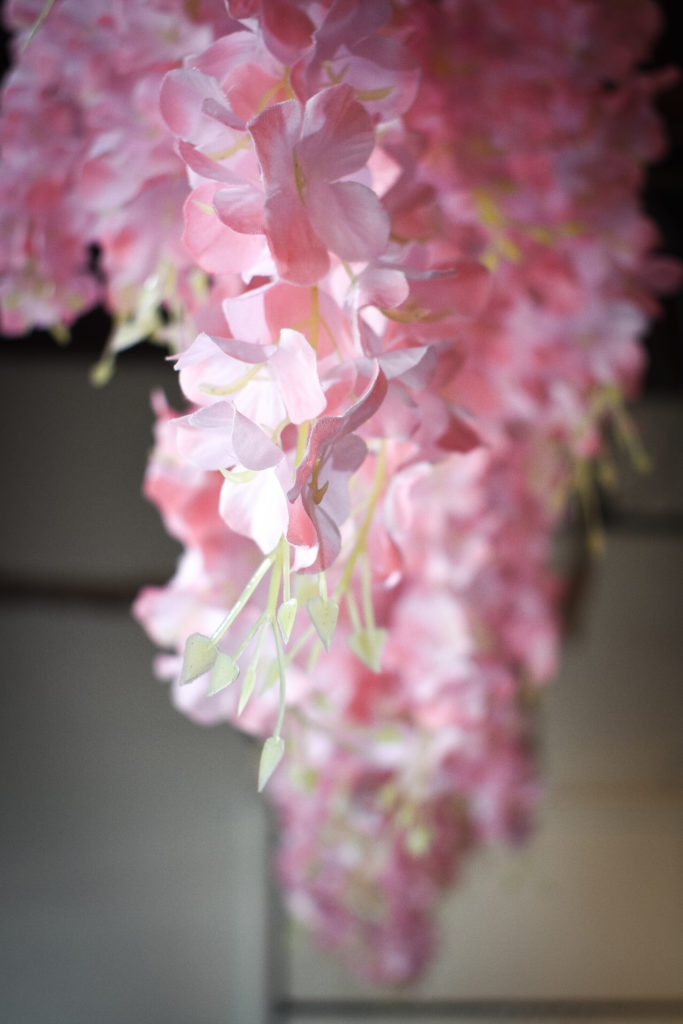
What is your inspiration for designing?
“My customers. Especially if I do custom work. My customer is my muse.
I did a lot of custom work in Argentina. Women there don’t want to wait 6 or 8 months to get a dress shipped from overseas. They want the dress to be unique. Even for girls going to prom, a mother-of-the-bride, first communion, or a christening, it’s normal to get a custom made dress. I do a collection every year and that’s what I have here in my boutique. I always have my target customer in my mind.”
Who is your target customer?
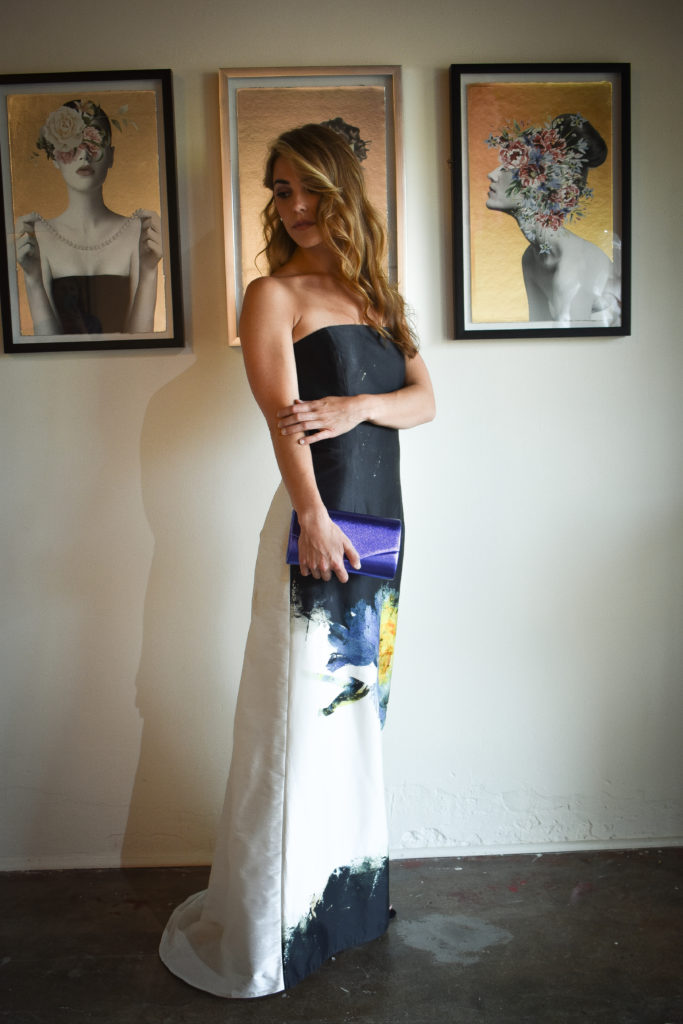
“They don’t die following a trend. They take the trend and twist their style into it. My customer appreciates craftsmanship and something a little bit different. They don’t want to dress like everyone else, they want to wear the outfit, not have the outfit wear them. I don’t create styles. I help bring out an individual’s style.”
Carolina’s Family
Carolina first met her husband online in 1998 (talk about a trend-setter). After a long distance relationship, they decided it was time for something to change for their relationship to continue. He worked for a company that required him to relocate every 6 months to a year. “I moved with him and focused on learning the new culture and new language.”
Together they have two girls, Valentina (8) and Biance (3). They settled as a family in Greenville in 2008 where she was a full-time mom until she opened her Etsy shop where she was designing, creating, and selling custom wedding gowns from her home studio.
“I like to design for my girls. My oldest, Valentina, is into everything “fancy”. My little one, Bianca, just wants everything in rainbow.”
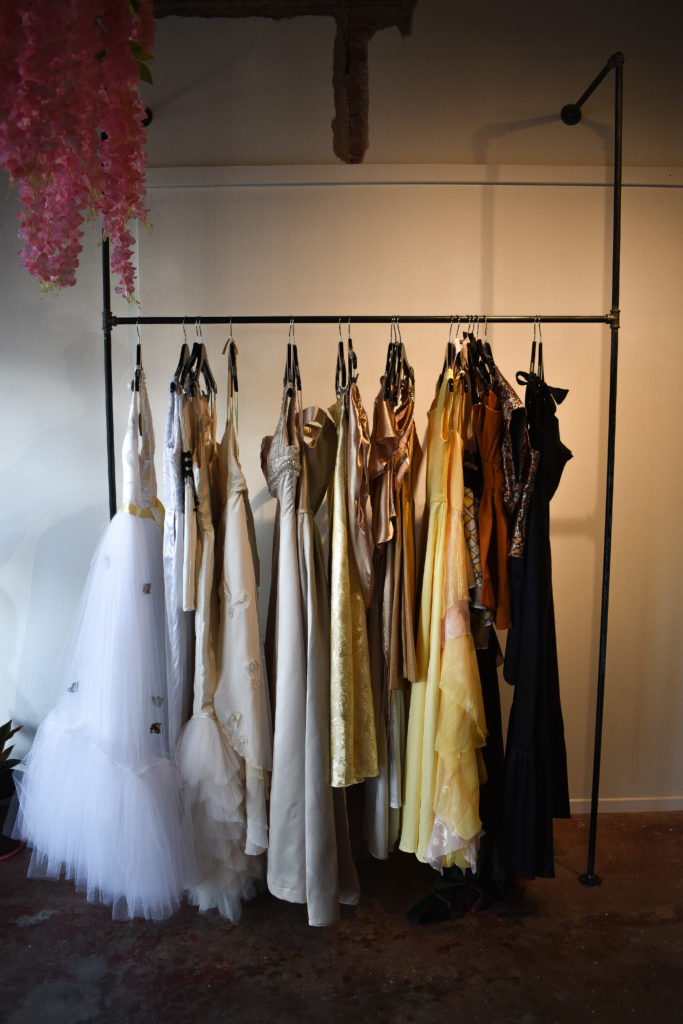
What was the first year of your business like in Argentina?
“The first month I opened in Argentina I was still studying with Roberto. In my first month, Argentina’s president left suddenly. The economy went south, so I decide to close for a week to figure out what to do. There were protests and safety was a big concern as well. The first year was so hard, but that’s how it is for every business. The economy was so bad, no one had money to shop in my store. It is much easier to start a business here in the States, but also definitely much more expensive.
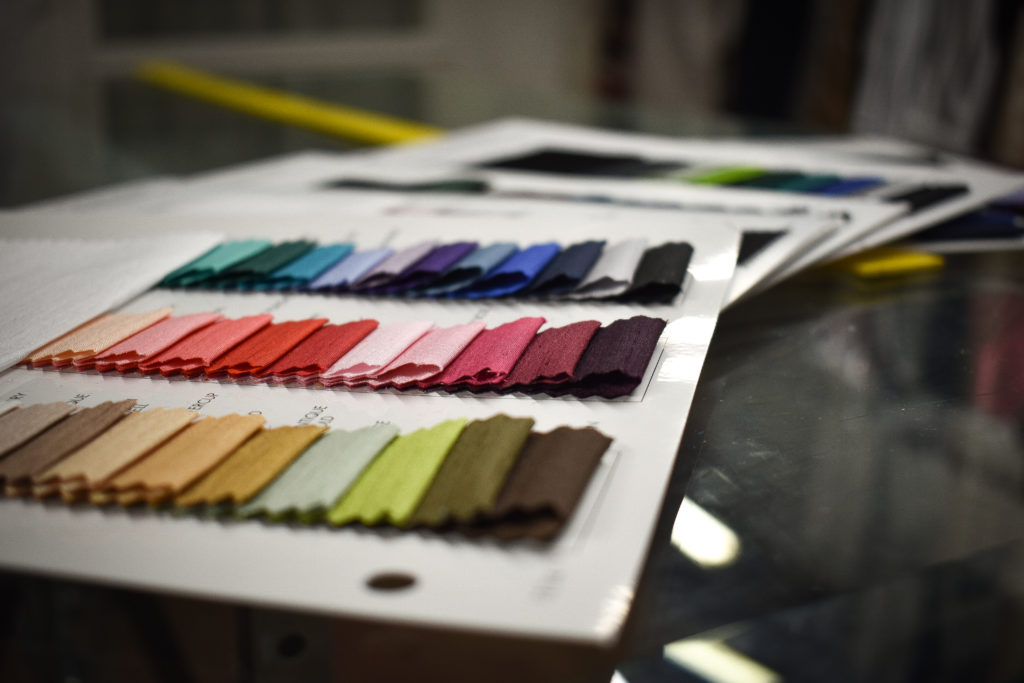
“I mostly get my fabrics from New York. They send me samples and I order what I want. I draw my designs first and then figure out what I need to order.”
What’s been your most interesting experience as a designer?
“I actually auditioned for Project Runway when I lived in Chicago in 2008 and met Tim Gunn. I went to the casting call with all my designs. You have three stages before you meet Tim, so I made it through all three. They have you describe your designs and then he talks a little bit about the process. He asked me, “How are you going to handle drama if it’s given to you?” I said “I’m zero drama, I don’t like or care about drama. I just want to grow and design and have fun doing what I love.” He looked at me and said “Honey, can you imagine how boring it would be for the people at home to just watch people sewing?”
I did, however, win a sewing competition in Michigan. The American Sewing Expo. I won a trip to New York and they put me up in the Garment District, it was great!
We settled here in Greenville in 2008. It took a while but settling here gave me the opportunity to open my boutique!
“In my vision I don’t want to just offer a dress or an outfit but to give my customers a look and help develop their style, including the hair, makeup, and accessories. I want to bring out the style that is inside my customers.”
Entrepreneurship in US vs Argentina.

“Here people want everything now! In Argentina, people are used to a custom dress taking a couple of weeks or a month until it’s finished. The woman in Argentina is used to getting a custom dress made, whereas here they aren’t because they don’t understand the concept of “custom made”. It’s a foreign concept to most women here.
I’ve had brides contact me because they ordered a dress online and it looks beautiful in the picture but when they receive it, it’s terrible. The fabric is not the same, maybe it’s too short because the sizes are different in the country where they ordered from. Being a designer, people think you’re going to be so expensive but that’s not always the case. It really depends on what you need done.”
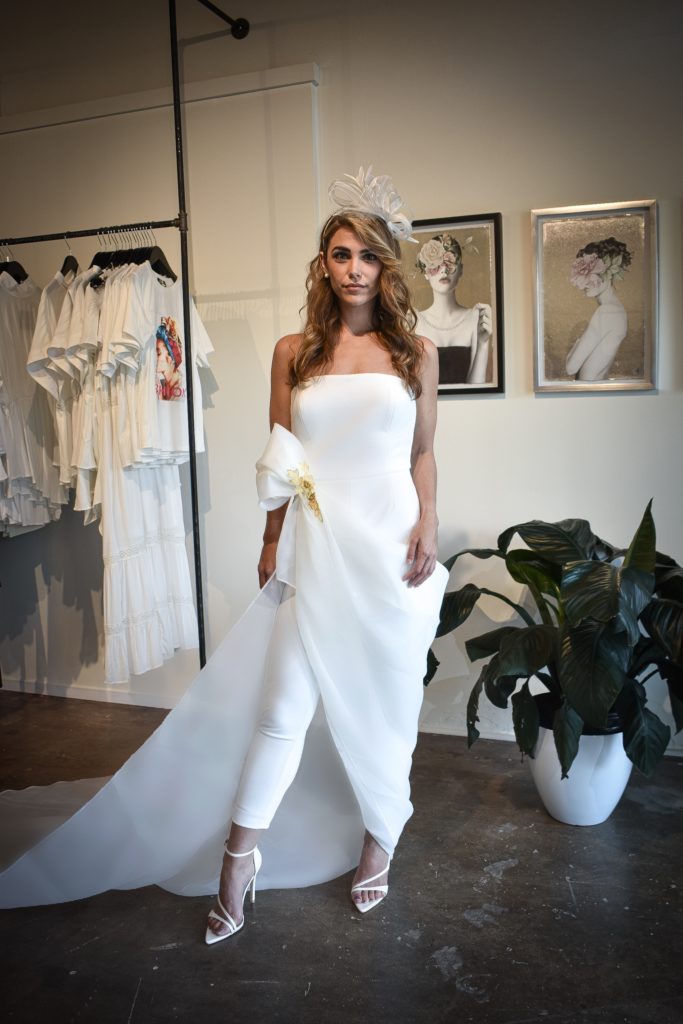
Have you ever had a time where you felt like you couldn’t do it?
“There were so many times when I had my boutique in Argentina. It was hard but I’m not going to complain about that because it helped me to grow.
When I opened my boutique here it was a mix of things: feeling guilty for leaving my daughters because I had been a full-time mom who always worked around their schedule, having so many years of not designing or running a boutique, and just being an immigrant learning the culture. I kind of lost myself.
How did you get your first group of customers?
“We did two openings, one soft opening and then a grand opening with influencers and media. We covered the windows before we opened and people were knocking on them wanting to come in and ask when I was going to actually open, those people came back!
What happens when the buzz dies?
“I rely on social media (mainly Instagram), magazine interviews, and I’m planning to do a trunk show in July. Also, my assistant and I are planning what’s called a “Sip and Style” where we do a workshop on how to put a look together and just get our brand out in the community. I’m just trying to figure it out as things change, it never stays the same.
“I think the biggest mistake I’ve made in my business is not recognizing myself as a designer. I feel like what I do is okay, but seeing all the people react to my work and working with other seamstresses I will realize that I’m not that bad but I struggle to view myself as actually being good at what I do.”
A lot of our readers are new business owners and find it very difficult to manage payroll. How did you manage cash flow in the beginning?
“You have to be really wise with your budget, and stick to it. Don’t justify expenses you can’t really afford. Try not to go overboard. It’s the hardest part.
My store is 60 percent other designs and 40 percent mine. Why? Because I don’t have the capacity to produce for the whole boutique yet. Finding a seamstress is impossible, specifically in this area.
My goal is to have my whole boutique with my designs. It will take time to get there because I don’t have my team yet.
When you produce for a boutique, you have to make at least four sizes and you have to make two of each size at a minimum, it’s really a lot of work. I don’t like the idea of sending my production overseas. I want everything to be made here and for people to be able to see what’s going on.”
With the designs that aren’t yours, how do you decide which ones to put in your store?
“That was really tricky for me at first. I go to different vendors at certain trade shows and just simply look for what I like, but I have to remember I’m shopping for the customer. I always want to show something different.
It’s very overwhelming and expensive at first. You have to make sure the cost for inventory is put it in your startup budget. Do not open your doors until you have that. I let my eyes tell me what to look for, that’s the designer in me. When you walk in, you see colors, then style, then you look at the fabric and the quality, then at the size to make sure it’s true to its size… it’s quite a process. Now I have the vendors that I use regularly, but in the beginning, just getting started was really quite difficult.”
What happens if and when inventory doesn’t sell?
“I will redesign it and make it something else.
We are offering the other side of fashion, the slow fashion, it’s ethical. It’s hard to find fabrics that are ethically produced, but fashion is changing slowly. It was part of my mission because even though I’m so small as a business the waste that I produce as a designer is huge. I try not to throw the extra fabric away, I try to make it into other things and produce something else that is beautiful.”
What inspired you to put your studio in the middle of your boutique?
“I wanted to make sure people could see that we make the clothes here and can watch us work. I love to show that. I think people are interested to see that.
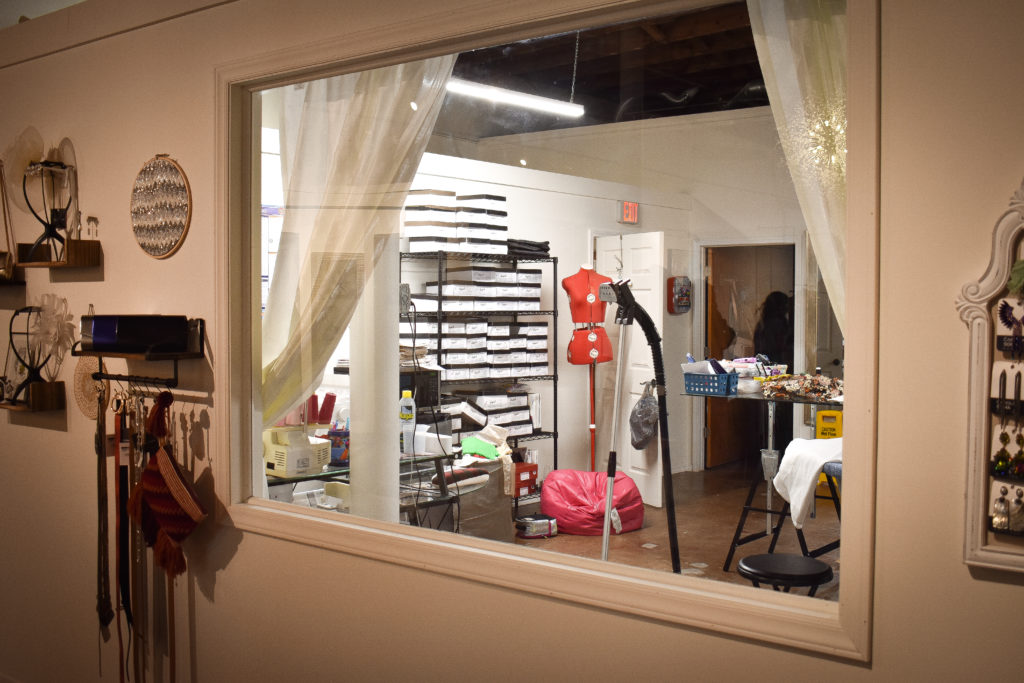
Sometimes it’s messy and overwhelming to create beautiful fashion, and I feel like my studio in the middle of my boutique reflects that.
“I love to listen to my customer, I’m very patient and I know how to understand what they want even if they aren’t completely sure. It’s more about them than it is about me. That’s not typical for a designer.”
How crucial is it for an aspiring designer to invest a lot of money in their equipment?
“It’s not crucial. You can start with a sewing machine for $200. All you need to get started is a sewing machine, serger, good scissors, thread, paper to make patterns (I do it the old-fashioned way!), fabric, pins and that’s it. Just start! I use a basic Singer sewing machine, I don’t really use denim or heavy fabrics so I don’t need an industrial machine.”
What advice would you give someone who is an aspiring designer and wants to open a boutique?
Figure up the numbers first! If you can’t use your own money go for a loan but make sure you factor it in your budget to pay it back. Have a business plan! I think it is a balance of planning and learning as you go and letting your experiences teach you. Having a business plan is a must, but I didn’t do it in the traditional sense because of my experience with my boutique in Argentina, I did figure up the numbers though. I did research online on how much I needed to start a boutique here in the states and it varied from $50,000 to $250,000. It just depends on what you need, the size of your space, your brand, and the location. It’s very different if you’re opening here in Greenville or you are opening in New York City.
It was hard to factor in my studio being in my boutique. I had my studio in my house before and moved it here. I had to figure out the cost of producing for my boutique in house as well as bringing in other designs, I couldn’t find those numbers anywhere. You have the numbers accessible to you for production from New York, or overseas, but not in-house, but because of my experience, I knew how much it would cost me. You just have to be flexible and willing to adapt.
You need to have at least 6-12 months in your pocket. Rent, payroll for your employees, and of some extra for inventory. Once you have that, just go for it.
Being a business owner is a lot of work and responsibility but it’s amazing. I don’t know if I got it from my dad or what but I could never see myself working in a regular office for someone else.”
What legacy do you want to leave behind?
“That you can work in your passion. You just have to wait for the right moment. I’m very lucky to have the opportunity to do what I love and it not feel like work.”
What advice would you give for a designer to find their aesthetic?
“Listen to what the artist in you is telling you as a designer, but as a business owner, you have to think about what will sell. Being a designer is like being an artist, you find inspiration wherever your mind or your eye catches your attention. I found my inspiration mostly in icons, actresses, and other designers. I love Alexander McQueen and Valentino. I remember going to see the magazines and getting inspiration from those high-end designers and now I just find the inspiration in the customer, and sometimes I let the fabric speak to me.”

